
Basic Things Every Driver Should Know About Cars: Part 1 of 2
Car curious? Don’t know much about cars but want to learn a few things to avoid feeling ignorant about the subject? It doesn’t matter if a vehicle is owned, leased, or borrowed, there are a few things everyone, especially new drivers, should know about them. Follow along in this two-part series as we go over them. In this installment, we are going to discuss what kind of vehicle you have and the fluids to watch.
What is it – Year, Make, Model, Number of Cylinders
The year, make, model of your vehicle, and the number cylinders it has are the most basic information about your car, and yet, many drivers are not sure of it. It is not enough to know you have a Jeep. The information is needed for your insurance company, your mechanic, and you in case you need to go to the parts store.

The insurance agent will need it to quote you the correct rates. The mechanic will need this information to make sure the correct specifications are used when repairing the car. Finally, if you go to the parts store, the clerk at the counter is going to need the same information to get you the correct part or component you need.
Fluids – Oil, Braking, Steering, Coolant, and Windshield Washer
Gasoline is not the only thing cars need to function correctly. They have several fluids circulating through them to keep the vehicle moving, braking, steering, and seeing as best as possible. Monitor these fluids regularly. Don’t forget about them. Bad things happen if you forget them. Always use the types of fluids recommended in your owner’s manual.
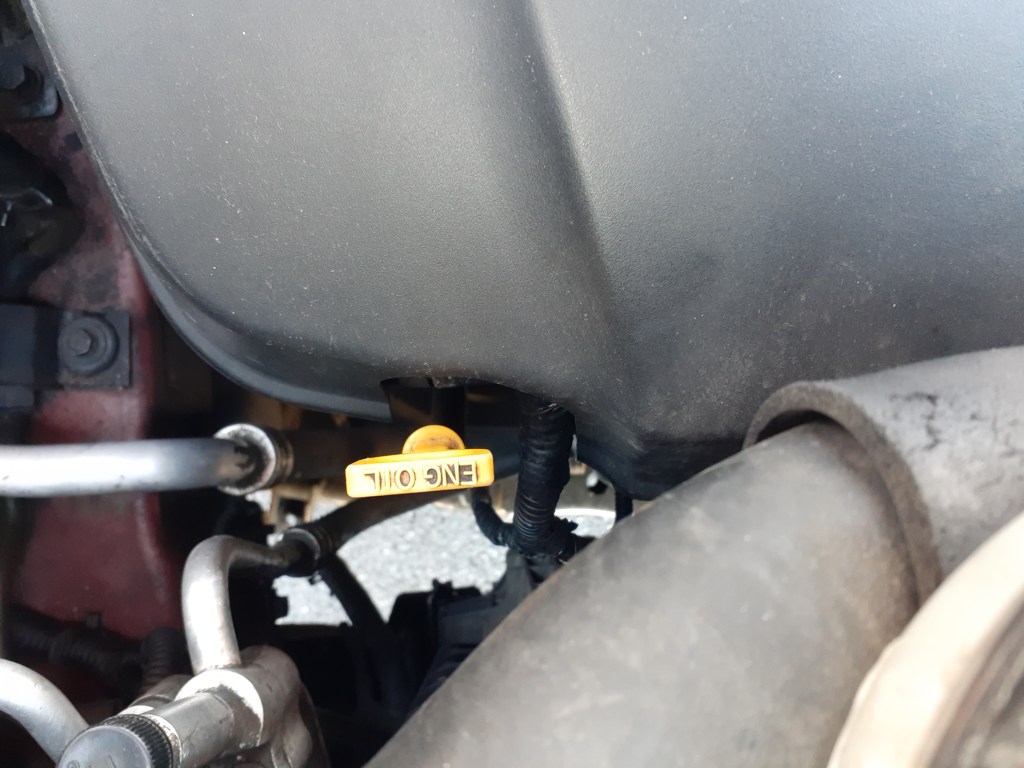
Photo: Hernando Pizarro / Motorbiscuit.com
Engine Oil
Oil keeps the engine lubricated. Make sure that it is changed regularly (check your manual for a schedule). To check the oil level in the engine is easy. There is a long thin rod, called a dipstick, that has a pull handle. When the car is off, pull out that rod. It can be over a foot long. The last few inches of the rod will have a gauge etched on it. It will have a mark for full, and another mark low. Clean off the rod. Put it back in and pull it right back out again. Check the gauge for the level and put the rod back in again.
Do you need to add any oil? If you do, there’s an oil cap on the top of the engine. Add it there, but beware, oil fills quickly. Only add oil until the gauge on the dipstick shows you’re okay. Do not fill the engine all the way to top of the dipstick or the top of the oil cap.

Photo: Hernando Pizarro / Motorbiscuit.com
Braking Fluid
Braking Fluid makes sure your braking system can get you stopped when needed. When you apply the brakes, the fluid moves through the brake lines to the pistons in a brake caliper. Those pistons push out the brake pads onto the brake rotors. That is what ultimately stops you. You do not want to be low on fluid. Find the plastic reservoir for the brake fluid, which is normally on or near the firewall.
The side of the reservoir has raised markers that tell you where the full level is, and where the low level is. You might also be able to tell if the level is low with pedal feel. If you find that your foot is nearing the firewall when you press the pedal, more than it used to, then you likely have a low level.
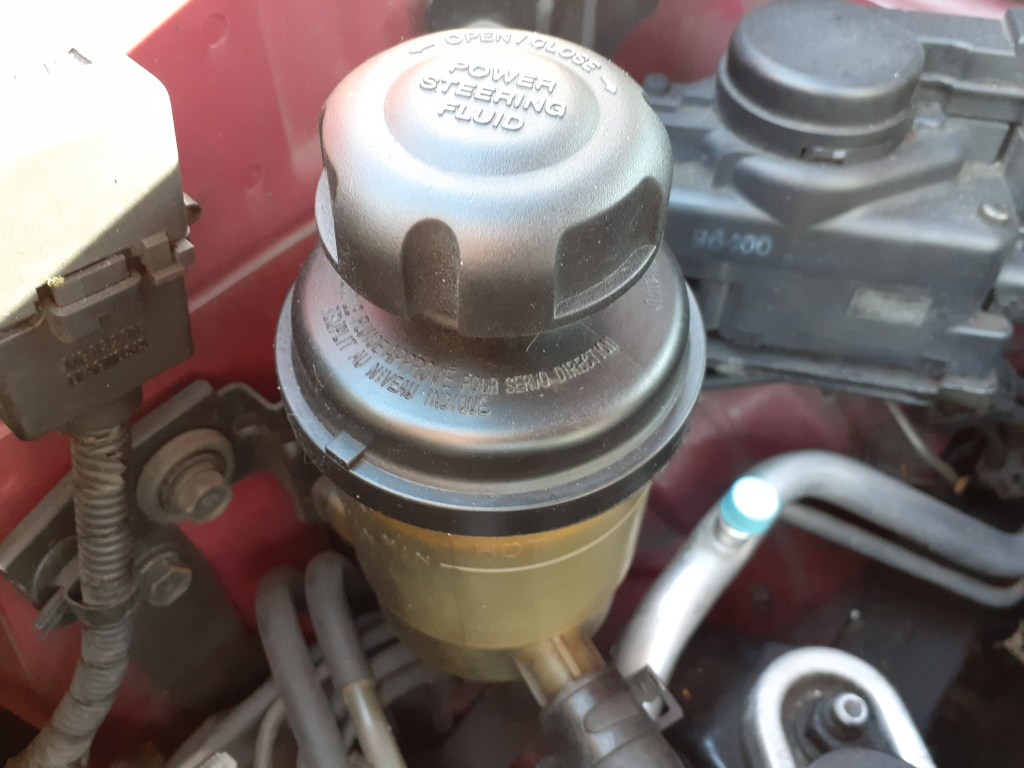
Photo: Hernando Pizarro / Motorbiscuit.com
Power Steering Fluid
When Power Steering Fluid is correct, the effort you put into turning the steering wheel will be very little. However, if that fluid gets low you will find yourself applying considerably more effort to get the steering wheel to turn. You guessed it! There’s another reservoir or dipstick for this one too! While the vehicle is running, check the fluid level in the reservoir or on the dipstick. Again, the reservoir will have raised markings on its side to indicate full, or low levels. If it’s a dipstick, your gauge is on the bottom of the dipstick.
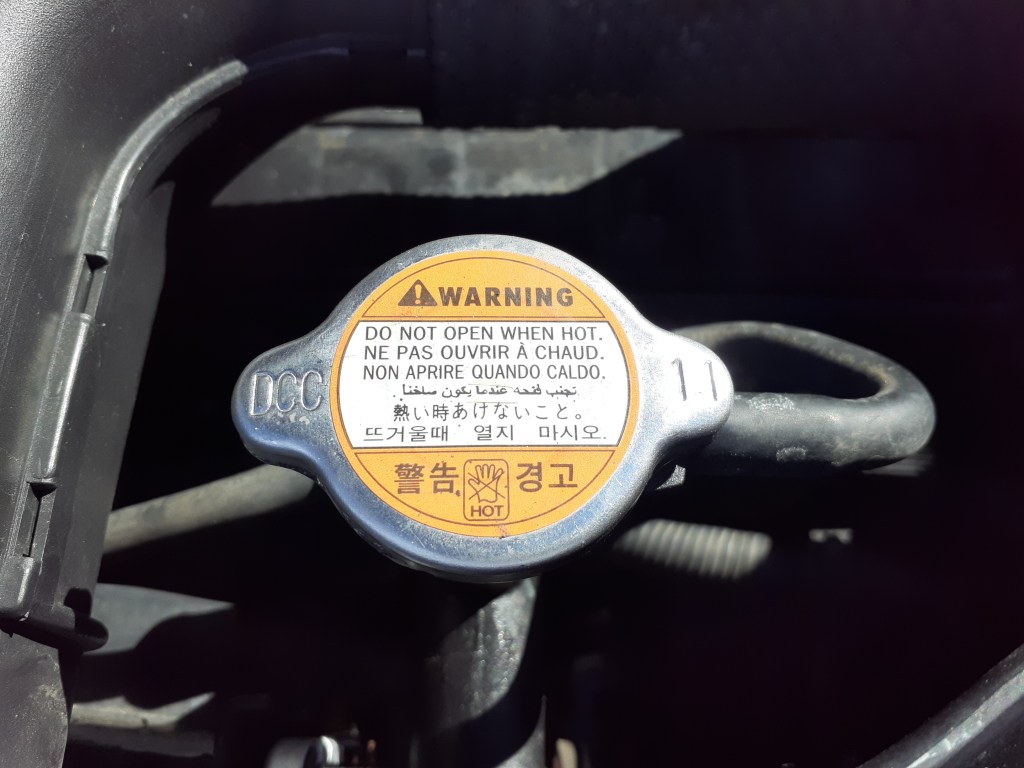
Photo: Hernando Pizarro / Motorbiscuit.com
Coolant
Coolant, often called anti-freeze, keeps the engine from overheating. Don’t let this fluid run low, or you’ll be on the side of the road very quickly. Check this fluid only when the car has cooled from usage. There is a large plastic overflow reservoir near the front of the car that has raised markers that tell you where the full level is, and where the low level is. Keep an eye on the level. If you don’t have a plastic reservoir, you have to take off the radiator cap and see if the radiator is full. Again, only do this with the engine cool! Fill the radiator as needed with the appropriate anti-freeze, as outlined in your owner’s manual.
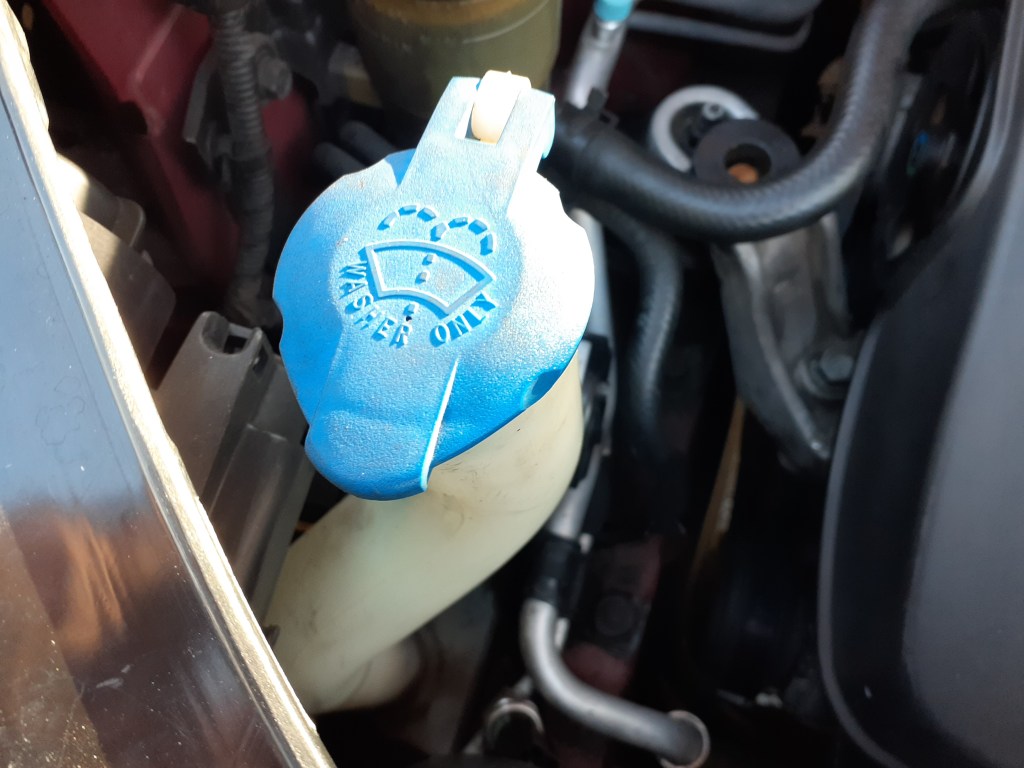
Photo: Hernando Pizarro / Motorbiscuit.com
Windshield Washer Fluid
Don’t get caught in a snowstorm behind a tractor-trailer without being able to clean off the windshield grime and slush off the windshield. Windshield washer fluid will keep the windshield squirters, or washer fluid nozzles, ready to do their job, spraying the windshield whenever you need them to. There’s another big plastic reservoir for this fluid. It’s usually toward the front of the vehicle and off to one side. That is one reservoir you can fill to the top.
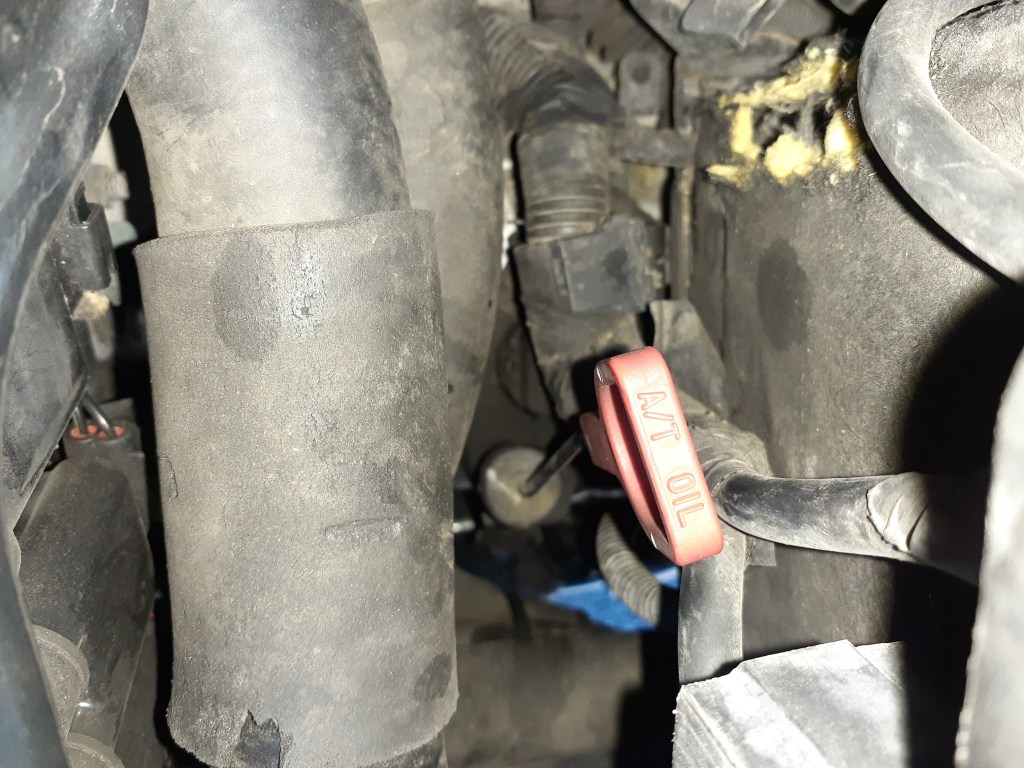
Photo: Hernando Pizarro / Motorbiscuit.com
Automatic Transmission Fluid/Oil
Another long dipstick may be available to you in the engine bay. Not all vehicles will have this dipstick, for the automatic transmission fluid/oil, or ATF. Some manufacturers are doing away with this dipstick and integrating sensors in the transmission. These sensors will trigger warning lights in the instrument cluster on your dash if there is an issue. However, if you still have a dipstick for this fluid, check it when the vehicle is running. Add the ATF if necessary, as outlined in your owner’s manual.
In the next installment of this series, Basic Things Every Driver Should Know About Cars: Part 2 of 2, we will go over a few other basic things every driver should know such as, filters, tire pressures, what to do if you can’t start your car, and what are good things to have in your glove box.


